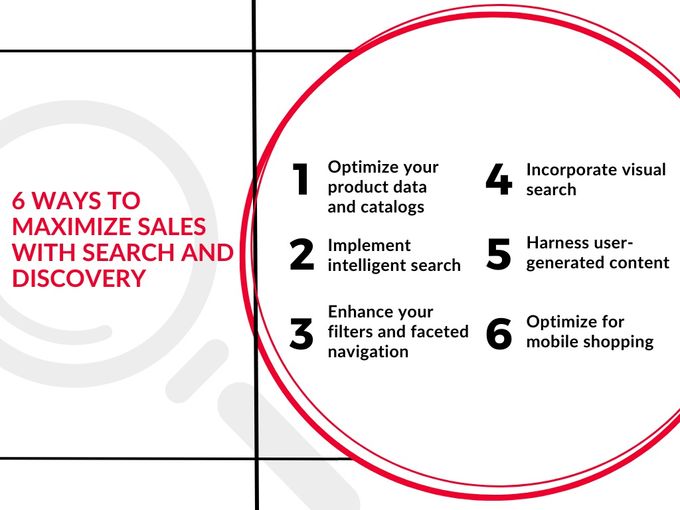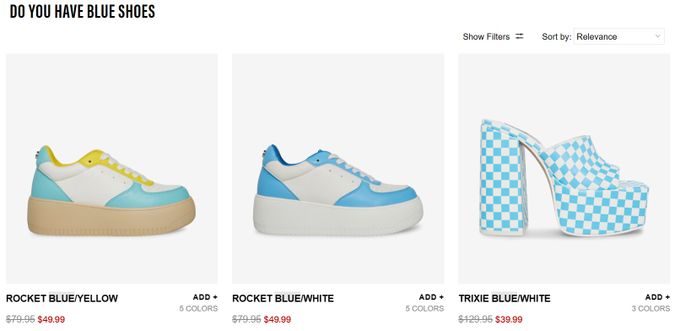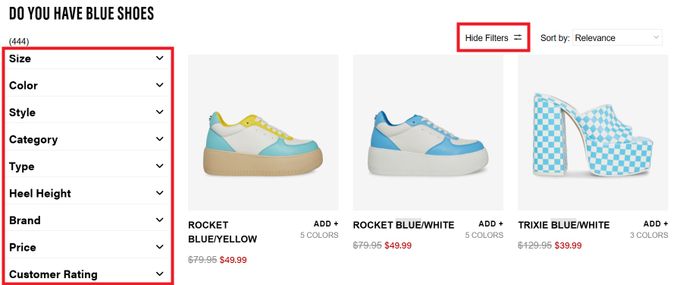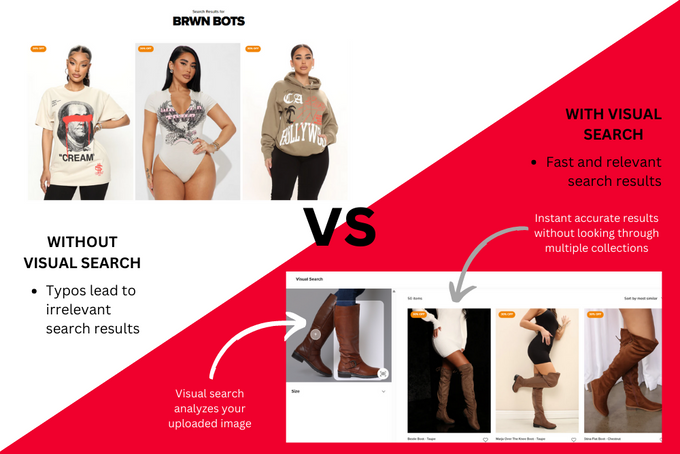6 Ways to Maximize Sales With a Comprehensive Search and Discovery Approach
Leverage the power of search and discovery to grow your eCommerce business.
Updated December 16, 2025

Today's online shopper doesn't just enjoy simplicity and convenience—they demand it. That's why user experience is critical for eCommerce store owners who want to increase conversions and sales.
Site search and discovery is a big piece of that puzzle. Forrester notes that website users who perform a site search can produce conversion rates as high as 250%. Below, we discuss 6 ways to maximize sales with a comprehensive search and discovery approach.
1. Optimize Your Product Data and Catalogs
A great search and discovery experience starts with accurate, well-organized product information. Your customers have a better chance of converting if they clearly understand what they're buying.
This means your product information has to be up to date and written in plain language—no unnecessary jargon. You can optimize your product data and catalogs further through:
- Detailed product descriptions: Include product features and benefits in your content. This enhances customer understanding and improves search results.
- Robust categorization: Structure your data into logical, broad categories and subcategories to simplify navigation and enhance product pages.
- Attribute optimization: Mention key attributes such as quality, weight, and price to facilitate more precise and effective searches.
Pro tips if you have a large inventory
It can become tricky to ensure your product information is accurate and uniform if you have a large inventory. Try:
- Implementing a centralized product information management (PIM) system.
- Using automated data feeds or integrations to update product information in real-time.
- Adhering to data validation rules to make sure all your product information complies with specific standards.
2. Implement Intelligent Search
Advances in site search technology have made it possible to leverage natural language processing and machine learning. These features enable intelligent search solutions to identify the precise context of a user’s query, whether it's a description, question, or even an abbreviation. This allows you to provide targeted results with speed and accuracy.
Plus, intelligent search adds a whole new dimension to the customer experience. It uses machine learning to identify shopper intent based on their past searches and preferences. You can use this data to fuel personalization strategies and earn customers’ loyalty and trust.
For example, Steven Madden uses intelligent search to interpret a visitor's query when they phrase it as a question instead of a search term ["Do you have blue shoes"].
» Here's how to easily implement natural language search on your eCommerce store
3. Enhance Your Filters and Faceted Navigation
Filters and facets are an integral part of the search and discovery experience. Customers can narrow down and refine their searches efficiently with filters. For instance, if the customer from the previous Steve Madden example wants to refine their search results, they can filter by size, brand, price, and even heel height.
Pro tips to optimize your search filters and facets
- Facilitating searches with intuitive filters such as “brand” or “type” for clothing items.
- Including interactive facets like price sliding scales or color pickers.
- Highlighting frequently used and beneficial filters/facets for easy user access.
» Effortlessly add product filters to your Shopify store with this simple guide
4. Incorporate Visual Search
Visual search is an immersive tool that lets users find items by uploading a picture. This new approach to web browsing, site searching, and shopping analyses all the details in a user's picture. This includes products, colors, and even brands. Visual search then scours your website for content that matches the picture and gives the user very targeted search results.
Visual search eliminates errors typically associated with text-based searches. For example, users won't miss out on search results because of typos or spelling errors.
For example, if a shopper misspells "brown boots" as "brwn bots" on Fashion Nova, the search results aren't relevant. However, by uploading an image of the boots the shopper wants, the results are on point.
» Here's how to implement visual search with Fast Simon
5. Harness User-Generated Content
Many brands globally have been able to increase conversions with user-generated content (UGC). It's an effective tool because you allow your audience to guide the discussion around your offering. This ensures your brand and content are relevant, engaging, and useful.
UCG isn't restricted to your marketing strategy—you can easily incorporate it into your search and discovery strategy too. For example, you can add reviews, ratings, and social media sharing opportunities to your product pages, search results, and checkout pages. You can even create user-generated landing pages. This will all help to improve search relevance and trust.
ASOS combined their UGC marketing and search and discovery strategies. Their #AsSeenOnMe social media campaign encourages users to post photos online of themselves wearing ASOS clothes. In turn, ASOS created a shoppable #AsSeenOnMe gallery on their website.
6. Optimize for Mobile Shopping
More and more customers are shopping on their mobile devices. This means optimizing your whole online store, not just the search bar, for m-commerce has become non-negotiable. Start by:
- Making sure your theme is responsive and mobile-friendly
- Removing or redesigning pop-ups that may cover up content or interfere with the user experience
- Ensuring there are no glitches, bugs, or unnecessary redirects
Nordstrom places a search bar prominently at the top of their mobile website, ensuring customers have easy access to search and discover products.
» Stay ahead of the curve by following these mobile eCommerce trends
Search and Discover Your Way to More Sales
It's more important than ever to optimize your website's search and discovery functionality. As you move forward with the process, remember a few tips: track and analyze your search metrics, identify insights and patterns to optimize search performance, and conduct A/B testing so you can continuously improve your site's search algorithm.
When you tap into your customers' needs and behaviors, and combine it with your business goals, the sky is the limit.










